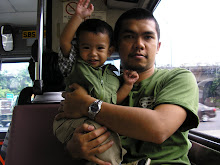A bit about the Canonet from Wikipedia:The Original Canon Canonet was released in 1961 and is remembered as Canon's first entry into the intermediate-class camera market, and also the first of the highly successful Canonet series of 35mm automatic-exposure rangefinder cameras.
The top plate only houses the shutter-release, with a locking ring for time-exposures, the frame counter and an accessory shoe.
The clean lines of the top are achieved by putting the advance lever underneath, together with the rewind crank, rewind release and back catch. The advance lever had an end which hinged downwards, making it easy to operate using the left middle- or third-finger. These controls on the bottom necessitate corresponding holes in the every-ready case.
Rangefinder focusing is controlled by a lever attached to the focus ring, also at the bottom of the camera.
The selenium meter cell is arranged around the Canon SE 45mm f1.9 lens - thus automatically compensating for filters; the aperture ring is scaled from f16 down to f1.9, followed by an "auto" setting (with a latch), for shutter priority automation. The Copal SV shutter has speeds from 1/500 down to 1sec, plus B. Film speed is set between 10-400 ASA by a lever in the shutter speed ring.
The viewfinder features a bright-line, and a scale showing the aperture.
There is a PC socket beside the lens, and a switch on the lens barrel for X- or M-flash sync.
There is a self-timer - set by a lever on the lens barrel.
A bit about my CanonetI found mine at Taman Puring (a flea market in South Jakarta) but didn't pick it up the first time I saw it because there was a disagreement between me and the seller about the price. The day after I went back there only to find it was already gone and I dare not to ask about it to the seller for I will not sacrifice my pride hehehe.....
Apparently the Canonet was meant for me because two months later when I visited Jalan Surabaya (an antique's arcade in Central Jakarta), the Canonet was there, at the display cabinet of my regular antique camera shop. I took the Canonet home for around USD20.00, slightly higher price than the proposed price in Taman Puring. It turn out to be fully functioning, even the selenium meter cell is still working (I doubt it accuracy though...).
I do not I have use it but I will one of this day.
















 my favorite...The Canon Canonet QL 17 (1965), rangefinder focusing, 45mm f1.7 lens, aperture range f1.7 to f16, shutter speeds from 1 to 1/500, aperture shown in viewfinder, quick loading feature. Unlike its sibling the QL25, QL17’s (and its other sibling the QL19) light meter only works in auto mode. Everything works well. I have use it with films. Purchased it for about US$20.
my favorite...The Canon Canonet QL 17 (1965), rangefinder focusing, 45mm f1.7 lens, aperture range f1.7 to f16, shutter speeds from 1 to 1/500, aperture shown in viewfinder, quick loading feature. Unlike its sibling the QL25, QL17’s (and its other sibling the QL19) light meter only works in auto mode. Everything works well. I have use it with films. Purchased it for about US$20.

